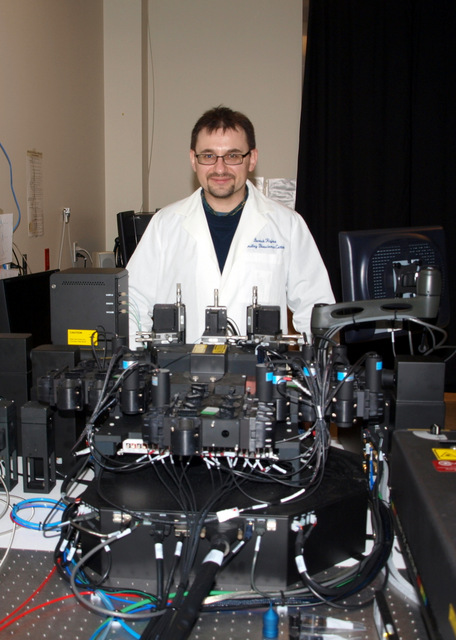Bartek's Home Page

- ORCID: 0000-0001-7540-8236
- Google Scholar link
- Scopus ID 6601969250
- Web of Science ResearcherID: B-3169-2009
Job opportunity!
I am looking for a post-doctoral research associate! Are you interested in designing, developing, and implementing statistical, bioinformatics, and machine-learning solutions for complex biological data collected using proteomics/metabolomics (through mass spectrometry), genomics, and cytomics (cytometry, microscopy, high-content screening)? Find out more here!
My current position and expertise
I am a Research Professor in the Bindley Bioscience Center at Purdue University where I conduct studies on high-throughput cytometry, high-content imaging, biological image analysis, biological pattern recognition, bioinformatics, and applications of statistical machine learning in cell biology, neuroscience and agriculture.
Research

One of the most critical programmatic goals in life sciences is the integration of emerging “–omics” fields in order to define the biological functions of the genes encoded in each sequenced genome and to predict the impact of environment and external perturbations such as the presence of pharmaceuticals or toxins on the resultant phenotypes. An essential part of this program has been contributed by data science tasked with merging the diverse “–omic” information inputs (such as genomics, proteomics, lipidomics, and metabolomics) with their phenotypic manifestations and the creation of predictive statistical models. Although historically, informatics has played a significant role in delivering tools to mine genomic data, the exceptionally high dimensionality of phenotypic information requires new computational approaches. My expertise is in this emerging research field, attempting to integrate data from a variety of linked phenotype-oriented technologies ranging from flow cytometry through biological imaging to proteomics, lipidomics, and functional genomics. The unifying theme of my research is the effort to deconvolve the functionality of cellular systems via a quantitative mathematical description of their phenotypes. My studies employ applied mathematics, computer science, and machine learning to decipher and interpret complex phenotypic patterns observed using quantitative single-cell cell analysis. By addressing the issues of automated classification of phenotypes in the presence of incomplete and noisy information, my projects have a direct impact on the fields of clinical cytometry (hematology, immunology, and oncology), high-content screening and drug discovery, toxicology, neuroscience, agriculture engineering, biosecurity, and biosurveillance. Working with collaborators, I developed new technologies for biological data science, including automated pipelines for clinical flow cytometry analysis, microorganism identification algorithms, and spectral information processing approaches for fluorescence and Raman cytometry and imaging. I am also a co-inventor of two breakthrough hardware technologies: multispectral flow cytometry (licensed by Sony Biotechnology, Inc and ThermoFisher Scientific, Inc.) and elastic light scatter microorganism identification system.
Page updated on 2023-08-20 00:01:20 -0400